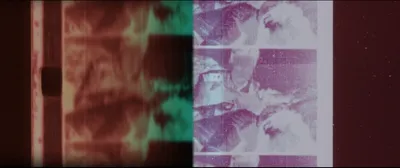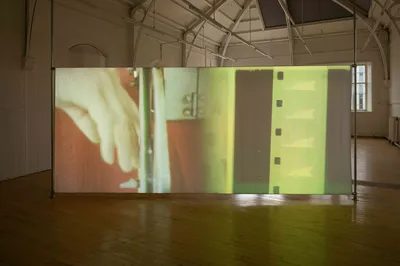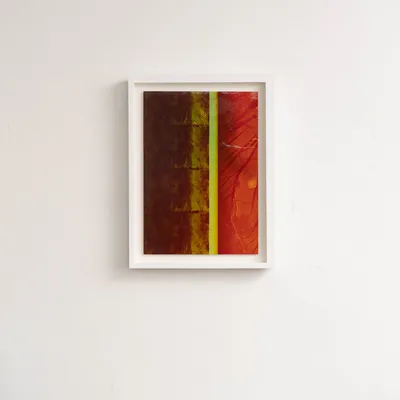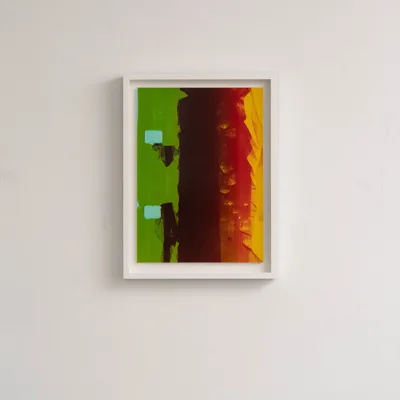
In his work, Peng combines unique cinematic elements with a false romantic nostalgia. He draws on stories about the Chinese diaspora and the political systems in his native country, particularly those of the late 20th century. Peng makes this visible but also tangible; in his films, there is a tension between a past that wants to be forgotten and a present that is still steeped in the influences of the past. This tension is emphasized by the way image and concept intertwine. For example, in the film “The Cyan Garden,” two identical projections can be seen. One on a large screen hanging just in front of the wall, the other on that wall, in a slightly different format with a slightly duller color. The one projection can be seen through the other, like a shadow of the one in front. In the film, two storylines are interwoven; one is abruptly interrupted in the image but continues to be heard as a voiceover in the background. In ‘autocorrect’, a scene is filmed several times and the projections of that one and the same story are placed side by side. A voice-over plays monotonous muzak of interchangeable self-reflective one-liners. Peng draws connections between the meaning and symbolism of the material film, and stories and events from the past, with critical comments on the political systems in his native China.
Concordia invited Peng Zuqiang to exhibit his work in the main hall. Concordia is a place where dialogue with visitors is paramount, and Peng's work displays the necessary polyphony that will strengthen and deepen that dialogue.
Zuqiang: "I work with film, video, and installations, focusing on the emotional and social meanings embedded in histories, bodies, and language. In my work, I connect the remnants of rumors, folklore, and transience. These connections transcend traditional historical accounts and evoke memories that are both collective and speculative.
I have a practical approach to film: understanding how a piece of celluloid is made and working directly with its components. In doing so, I explore the tactile, elemental nature of film and delve into how its composition reflects and interacts with its environment. This approach and exploration has led to my current project: an investigation into the redesign of celluloid film material through the use of natural substances such as water, minerals, plant-based developers, non-toxic fixers, recycled chemicals from processed films, and handmade DIY emulsions.
Conceptually, my project remains anchored in the question of witnessing—how film, both as a medium and as material, bears witness to political spaces and emotions. I am interested in how the passage of time and the materials that surround us complicate our understanding of the politics of memory and offer possibilities for imagining alternative futures.
Date
Jan 24, 2026 till May 3, 2026
Entrance
The exhibition is free to visit. Opening Saturday, January 24, 2025, at 3 p.m.
Media



